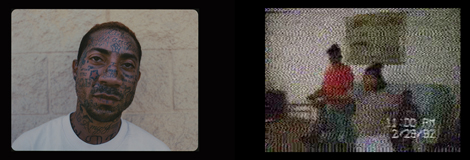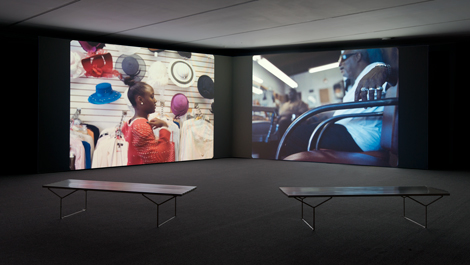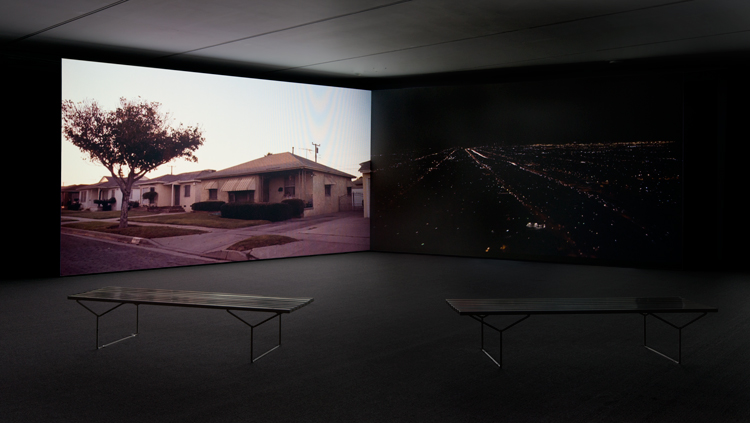Seeming to arise from the video music world this past summer to land at MOCA, the path of “Kahlil Joseph: Double Conscience” may seem roundabout if one only follows the trails of his dreamlike images. Digging a bit deeper unearths multiple contemporary art connections: he’s the older brother to recently deceased painter Noah Davis of the Underground Museum (where Double Conscience/m.A.A.d. first screened in 2014), he was curated by Kara Walker into the exhibition “Ruffneck Constructivists” at ICA, Philadelphia, and he’s a former intern to artist Doug Aitken.
Born in Seattle in 1981, Joseph came to Los Angeles in hopes of attending film school. When he didn’t get in anywhere, he studied a combination of art, art history, photography and television at Loyola Marymount University, immersing himself in film through Netflix and as a production assistant for music videos. He worked at Roman Coppola’s production company, Director’s Bureau, before taking an editing job with director Terence Malik that Joseph told an LA Times interviewer was “ …the best thing that ever happened to me. There was being born and there was this.”

Kahlil Joseph, stills from the film m.A.A.d., 2014, photography by
Chayse Irvin, courtesy of the artist.
Joseph shoots mainly on film, and gained prominence via hypnotic music videos for FKA Twigs, Shabazz Palaces, the fashion house Kenzo, Flying Lotus and Kendrick Lamar; Double Conscience/m.A.A.d. was initially created for Lamar’s opening slots for Kanye West’s 2014 Yeezus tour. Lamar, a Compton native, gave Joseph his uncle’s home video footage to work with. Joseph had only a few weeks on the project before touring began; he spent nearly six months afterwards refining the piece. Installation specialists Commonwealth Projects (whose clients include Aitken and Isaac Julien) structured the two-channel split-screen variation at Underground Museum and MOCA; the split title is drawn from Lamar’s album good kid m.A.A.d. city and W.E.B. DuBois’ term describing the internal struggle of African Americans between their African heritage and American consciousness.

Installation view of Kahlil Joseph: Double Conscience, March 20 – August 16, 2015 at MOCA Grand Avenue, courtesy of The Museum of Contemporary Art, Los Angeles, photographed by Chayse Irvin, installation photo by Brian Forrest.
Joseph’s work has sparked widespread interest, including pieces in W Magazine, i-D/VICE, The New Yorker and Art Papers, but he’s reticent to be interviewed, letting his work shift back and forth between increasingly blurred definitions of commercial video work and contemporary art. Joseph seems increasingly open to being redefined: “I’ve been getting a lot of requests to work with galleries,” he told Lily Lampe of i-D/VICE, “and I’ve been wondering what that work would be. It wouldn’t be another Kendrick Lamar or Flying Lotus… Ryan Trecartin said, ‘I thought I’d always be a filmmaker, but the arts community saw and responded to my work,’ and I said ‘Yeah, that’s how it’s been for me.’” In embracing the contemporary art world’s response, Joseph is clear on the perspective he embodies, as he notes in his 2015 Art Papers interview: “Almost all histories in black cinema aren’t really representations of us; most people who know black people on any level know that to be true …there are more black fine artists than there are filmmakers, which is crazy because the fine art world is one of the tightest-knit out there. But I think this underrepresentation is also an amazing opportunity for us: the black community is where all the great ideas are, it’s where the next generation of filmmakers are going to come from …once we start making movies in the same way that we make music, it’ll be undeniable.”


